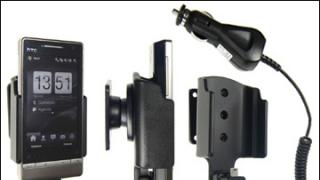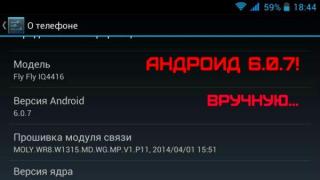This article will teach you how to add, change, or remove a drive letter for a partition, volume, or disk device.
Warnings
Letters A and B are reserved for Floppy drives if the motherboard supports floppy disks, if the drive is physically connected and enabled in the device settings in the BIOS. Otherwise, letters A and B are available for assignment to drives and partitions.
The letter C is reserved for the partition with the Windows operating system installed. Do not change the letter C under any circumstances.
After changing or deleting the drive letter, all shortcuts whose properties indicate the absolute path to files or folders will stop working.
Method 1: Using the Disk Management GUI
1. Open Control Panel (View: Icons) > Administrative Tools > Computer Management.
2. From the left menu, select Disk Management.
3. Right-click the partition, volume, or drive for which you want to change the letter.
4. In the context menu that opens, select the command.
5. To change the drive letter:
5.1. Click the button Change.

5.2. In the next window opposite the command Assign a drive letter (A-Z) select a new letter from the drop-down list and click the button OK.

5.3. Confirm the letter change by pressing the button Yes.

6. To remove a drive letter:
6.1. Click the button Delete.

6.2. Click Yes to confirm deleting the drive letter.

Removing a drive letter does not delete the partition and all the data stored on it, but the partition no longer appears in the Computer folder, although you can still see it in Disk Management.
7. To add a drive letter:
7.1. Click the button Add.

7.2. In the window that opens, opposite the inscription Assign a drive letter (A-Z) select the desired letter from the drop-down list and click the button OK.
Method 2. Through the Windows 7 Registry Editor
Warnings
Before you rename a registry setting, make sure that the letter you want to assign to the drive is not used by another drive.
Great care should be taken when editing the registry.
1. Press the WINDOWS+R key combination, type regedit and press OK.
2. In the Registry Editor, open the section:
HKEY_LOCAL_MACHINE\SYSTEM\MountedDevices
All partitions and drives to which letters are assigned are displayed in this registry section as binary parameters \DosDevices\X: (instead of X is the letter of the corresponding drive or partition).

3. To change the drive letter:
Rename.
Enter the desired letter and left-click on the free space.
4. To remove a drive letter:
Right-click the drive letter option you want to change, and from the menu that appears, select Delete.
Confirm deleting the registry value.
After a clean installation of Windows from a flash drive, you may need to change the drive letter. Because if you remove the flash drive at the wrong time, it is assigned not the last letter, but the letter of the local drive. To fix this problem, after copying files to the system disk, when the system should restart after ten seconds, you need to remove the media or use our instructions.
In this instruction, we will provide ways to change the drive letter in Windows 10. These methods will also work on previous operating systems from Microsoft. We will analyze them using the latest version of the Windows 10 operating system as an example.
We used the disk management utility in Windows 10 in the article. There are different ways to open the Disk Management utility, but we offer the most convenient one in our opinion.
Be careful as some programs that use this drive letter may stop working. The system should still warn you about this, if you are sure that there will be no problems, then feel free to continue.
You can also change the drive letter using the Registry Editor. Before making changes to the registry, we recommend that you read the article so that you always have the opportunity to return to the previous state.

For the changes to take effect, you need to restart the computer. If you just want to change the drive letter, set the \DosDevice\letter: parameter to any letter that is not currently in use.
PowerShell Windows 10
PowerShell allows you to change the drive letter in Windows 10 with just one command.
- Opening Windows PowerShell as administrator using search Win+Q.
- Further, for example, if you need to change the drive letter from F on L, then just use the command: Get-Partition -DriveLetter F | Set-Partition -NewDriveLetter L(drive letters can be changed to suit your needs).
Windows 10 Command Prompt
You can also change the Windows drive letter using the command line. Here we will show with an example how to do this using the command line. And also read the article, since our option may not suit you.

After executing the last command, you should receive a message indicating that the assignment of the drive name or mount point was successful.
conclusions
In this article, we figured out how to change the drive letter in Windows 10. All the methods we proposed work both in the latest versions of the Windows 10 operating system and in previous Windows operating systems.
In this article we will tell you how to change the drive letter using standard Windows tools.
We would like to note right away that by default the system drive is assigned the letter “ WITH" It's better not to change it. Firstly, changing the system drive letter is a rather risky endeavor. In case of an error, you can render the system inoperative. Secondly, it is very convenient that the system drive is designated by the letter “C”; this can help you quickly find the necessary information or fix any problem.
But the letter of a non-system drive can be changed without fear of losing any information. For example, in this case the flash drive is designated by the letter “ G”, but you can replace it with any other unoccupied letter in the range from “A” to “Z” (Fig. 1).
Click " Start» - « Control Panel" and select " Administration"(Fig.2).
Double-click the left mouse button on the item “ Administration».
A window will open in front of you (Fig. 3).
Open the item " Computer management", a window will appear (Fig. 4).
To change the drive letter, select " Disk Management"(Fig. 5).
From Fig. 5 you can see that the flash drive is designated by the letter “G”. In order to change the letter, right-click on the flash drive and select “ Change drive letter or drive path" A window will appear (Fig. 6).
Click " Change"(Fig.7).
Select a new letter for the flash drive and click " OK" After this, a warning will appear (Fig. 8).
The essence of this warning is that programs installed on a disk or flash drive have their own unique path, which indicates the letter of the drive (flash drive) on which these programs were installed. After changing the letter, the path to the files of these programs will not change. The result will be a situation in which installed programs will have an incorrect path (path using the old letter). They won't launch. Therefore, it is not recommended to change the letter of the system or local drive on which programs are installed. However, in the case of a flash drive that contains regular files (documents, movies, music, installation files, etc.), you can change the letter without fear of damaging the data path. Select " Yes» to the warning question shown in Fig. 8, after which the flash drive will be displayed with the letter you selected (Fig. 9).
After installing Windows, all partitions are automatically named. By default, the system one is assigned the letter C, and the rest are assigned further in the alphabet: D, E, etc. If you connect a flash drive, it will be assigned to the next one in the order of priority. For example, F. We connected an external hard drive - it will be called G.
What to do if you don't like the standard name? You can rename the drive letter to whatever you like. There are 26 of them in total: from A to Z.
The first two - A and B - are already occupied. They are "reserved" for floppy drives. Although if you don’t have them (they haven’t been installed on modern PCs and laptops for a long time), then you can easily assign one of these letters to the local partition.
This is done in literally 5 minutes. Or faster. Moreover, changing it in different versions of Windows is performed almost identically. Plus, there are universal methods that work for Windows 10, 8.1, 7 and even XP. Step-by-step instructions on how to change the drive letter are presented below. This is done very simply, and now you will see for yourself.
Let's start with the good old "seven".
- Go to Start – Control Panel – Administrative Tools.
- Find the Computer Management shortcut and launch it.
- A new window will open - in the left column, click on “Disk Management”.
The first stage is completed. You will see a working window where you can change the drive letter. All available partitions are displayed here (there are 3 of them in the screenshot), plus connected flash drives and external HDD hard drives (if any).

Select any of them, right-click and click on the line “Change drive letter or path”.

A small window will open - click on the “Change” button.

As you can see, there is nothing complicated here. Just a couple of mouse clicks, a few minutes - and you're done. Go ahead.
Assigning a letter to a section in the figure eight is also very simple
And much faster than in the previous version.
- Open Start.
- Write diskmgmt.msc in the search field.
- Press Enter.
Or click Win+R and copy this command to Open.
After this, the required window will immediately appear where you can reassign the drive letter. Then everything is done in the same way: select the desired local partition and rename it.
How to change drive letter in Windows 10?
Tens users shouldn’t have any difficulties either. After all, changing the drive letter in Windows 10 is very easy. All you need to do is right-click on the “Start” button and select “Manage” from the menu.

After this, a familiar window will open where you can assign a letter to your hard drive or flash drive. This is done exactly the same as in Windows 7 or 8.
What to do if after a while you no longer like the new name? How to return the drive letter? Open this window again and restore the previous name.
Finally, I will note a few nuances that you need to know:
- The first two methods are universal. They work for all OS: Windows 7, 8, 10 and even XP. So if you need to change the drive letter in Windows XP, choose one of the first two options.
- After renaming the partition, a warning message will appear indicating that some programs may no longer run. That is why it is strictly not recommended to touch the local drive C at all.
- After assigning a new letter, shortcuts that referenced that local section may not work correctly. Therefore, be sure to check their performance. And if something happens, create new shortcuts.
As a rule, the need to change the partition name appears only in one case - when you use an external HDD drive that is permanently connected to a computer or laptop. If you don't like the given name, you can change it. Similar steps can be done for a flash drive, but it is usually used only temporarily.
However, there is another situation when a name is not assigned to a new device. This usually applies to the same external HDD drives. In this case, you need to manually set the drive letter using the method described above.
Changing the drive letter is a procedure performed to run a program in which absolute paths are set in the initialization files, or to arrange hard drive partitions in a certain way. Therefore, you need to know how to change the drive letter in Windows 10.
Renaming a section
The letter C is intended for the name of the system partition (this has been the case since the very appearance of Windows). The remaining sections are named in alphabetical order from D to Z.
Healthy! The letters A and B are used to name floppy drives. If these devices are not available on your PC, use these characters as well.
To change the letter, follow these steps:
- Start menu → Control Panel → Administrative Tools → Computer Management → Disk Management.
An alternative way to launch the utility is to enter the command in the Run window: diskmgmt.msc. - Select the desired partition → RMB → Change drive letter or drive path... → Change.

- Set the switch to the “Assign a drive letter (A-Z)” position → specify the desired letter in the drop-down list → confirm the action after the warning appears.

Important! If you rename the partition where programs are installed, they will most likely become impossible to run.
In the case of a flash drive, repeat the same steps as when renaming hard drive partitions.
Video
The video will show you how to change the drive letter.
Purpose of the letter
You need to assign a drive letter if for some reason it has been “lost”, as a result of which this partition of the hard drive is no longer displayed when logging into My Computer.

How to hide a section
- Run: In the Run window, enter the command → regedit.
- Go to: HKEY_LOCAL_MACHINE → Software → Microsoft → Windows → CurrentVersion → Policies.
- Menu Edit → New → section called “Explorer”.

- In the "Explorer" setting, create a "DWORD Value (32-bit)" called "NoDrives."

- Open NoDrives → set the radio button to Decimal and set the value to the letter of the partition you want to hide.
 You can find out the numerical value corresponding to each disk in the table:
You can find out the numerical value corresponding to each disk in the table: A 1 I 256 Q 65536 Y 16777216 B 2 J 512 R 131072 Z 33554432 C 4 K 1024 S 262144 hide
all sections67108863 D 8 L 2048 T 524288 display
all sections0 E 16 M 4096 U 1048576 F 32 N 8192 V 2097152 G 64 O 16384 W 4194304 H 128 P 32768 X 8388608 Healthy! To hide multiple sections (two or more), enter the sum of their numeric values in the field.
- Restart your computer.
Conclusion
When renaming hard drive partitions, programs installed on them may stop working. Therefore, such actions should only be performed as a last resort or if applications require it. The renaming algorithm for HDD, SSD (read about how to configure Windows 10 to work on an SSD in the article ““) and removable flash drive is the same.









